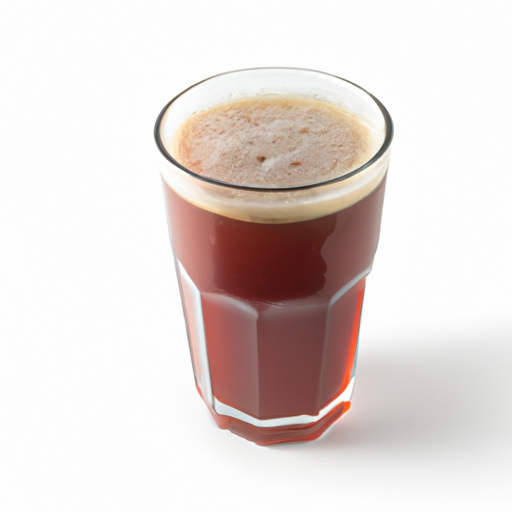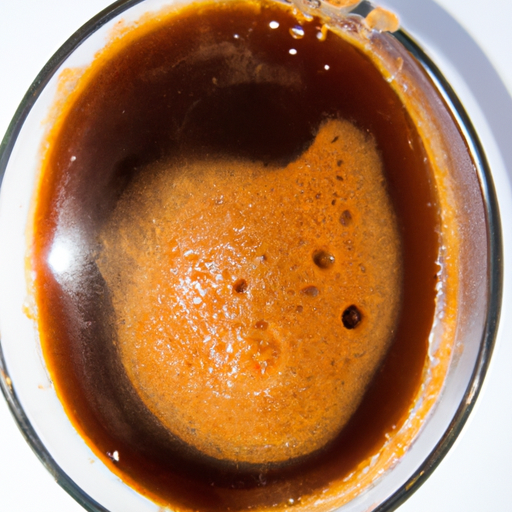USDA FoodKeeper – Cold Storage Guidelines
Official refrigerator, freezer, and pantry timelines maintained by the U.S. Department of Agriculture.
Visit USDA FoodKeeperFermented from bread and often enjoyed as a refreshing, tangy beverage, this traditional Eastern European drink holds a unique spot in both culinary and cultural history. To ensure you savor its distinct flavors safely, keep it chilled in the fridge and enjoy within 10 days, with a little wiggle room for two days past its expiry.
30 most common foods with instant answers. Print it and stick it on your fridge—completely free! Want more? Upgrade to the complete guide with 70+ foods.
"Kvass should be stored in the refrigerator at 40°F or below and consumed within 1-2 weeks for optimal safety and quality, according to CDC guidelines."


Fridge
38-40°F (3-4°C)
Glass bottle with tight seal, store upright
10 days
Excessive sourness, mold, off smell
Bread soup base
Root beer, non-alcoholic malt beverage
Kvass, like many fermented foods, does not have a strict expiration date but rather a best quality date. While kvass can technically last for several weeks if stored properly in the refrigerator, its taste and quality may begin to deteriorate over time. The best quality of kvass is usually within the first week or two of fermentation when it is fresh, fizzy, and flavorful. As kvass ages, it may become less carbonated and slightly sour, which some people may enjoy as a different flavor profile. However, if kvass develops any off smells, flavors, or mold, it should be discarded.
To determine if Kvass has gone bad, look for any mold growth on the surface, a sour or off smell, or a slimy or thick texture. Fresh Kvass should have a clean, slightly tangy aroma, a smooth consistency, and no visible signs of spoilage. If you notice any of these indicators, it is best to discard the Kvass to avoid consuming spoiled food.
Kvass is a fermented beverage made from bread, water, and yeast or a bacterial culture. As with any fermented food, there is a risk of contamination by harmful bacteria if not prepared or stored properly. It is important to ensure that the bread used in making kvass is fresh and free from mold. Additionally, the fermentation process should be carried out in a clean environment to prevent the growth of pathogenic bacteria. To reduce the risk of foodborne illness, always use clean utensils and containers when making and storing kvass, and refrigerate it promptly after fermentation to slow down the growth of any harmful bacteria.
To store kvass properly and maintain its freshness, it is recommended to keep it refrigerated at all times. Store kvass in a tightly sealed glass container to prevent exposure to air, which can cause it to lose its carbonation. If you prefer your kvass to be more effervescent, you can transfer it to a plastic bottle with a tight cap after the initial fermentation stage and leave it at room temperature for a day or two before refrigerating. Remember to burp the bottle periodically to release excess carbonation and prevent it from exploding due to pressure buildup.
Kvass has a long history in Eastern European and Slavic cultures, where it is considered a traditional and popular beverage. It is often consumed as a refreshing drink during hot summer months and is believed to have various health benefits due to its probiotic properties. In Russia, kvass is sometimes referred to as 'Russian Coca-Cola' due to its widespread popularity. Kvass is also used in culinary recipes, such as soups and marinades, adding a unique flavor to dishes.
Once opened, Kvass can be consumed within 2 days if stored in the refrigerator. It's best to seal the container tightly after each use to maintain freshness and prevent contamination.
It's safe to store Kvass next to other beverages in the fridge as long as it's properly sealed to prevent cross-contamination. Avoid storing it near foods with strong odors that could affect its taste.
Cooking Kvass can alter its flavor and consistency but does not significantly impact its shelf life if stored correctly. Once cooked, store any leftover Kvass in an airtight container in the refrigerator and consume within 2 days.
The type of container can impact Kvass' shelf life. Glass or food-grade plastic containers are ideal for storing Kvass as they maintain freshness better than open or non-food grade containers. Always ensure the container is sealed properly to prevent contamination.
When transporting Kvass for a 6-hour road trip, it's crucial to keep it chilled in a cooler with ice packs to maintain a safe temperature. Avoid leaving it in direct sunlight or in a hot car. Once at your destination, refrigerate it promptly.
Freezing Kvass is not recommended as it can alter the texture and flavor upon thawing. The fermentation process in Kvass may not withstand freezing and could lead to a change in its overall quality. It's best consumed fresh for optimal taste.
The shelf life of Kvass can vary between brands due to differences in ingredients, fermentation processes, and preservatives used. Always refer to the expiration date on the packaging and follow storage instructions provided by the specific brand for best results.
Kvass typically lasts longer when stored in cooler temperatures, such as in winter. High temperatures can accelerate bacterial growth and fermentation, shortening its shelf life. To prolong the freshness of Kvass, store it in a cool environment away from direct sunlight.
If Kvass has been at room temperature for several hours, it's advisable to discard it to avoid any risk of foodborne illness. Bacteria can multiply rapidly in warm environments, potentially leading to spoilage. Always prioritize food safety over consuming questionable items.
30 most common foods with instant answers. Print it and stick it on your fridge—completely free! Want more? Upgrade to the complete guide with 70+ foods.
Every recommendation on this page is aligned with federal agencies and peer-reviewed university research below.
Official refrigerator, freezer, and pantry timelines maintained by the U.S. Department of Agriculture.
Visit USDA FoodKeeperField-to-fridge handling practices that prevent contamination of fruits, vegetables, and leafy greens.
Visit FDA Produce SafetySurveillance-backed guidance on pathogens, symptoms, and steps to reduce foodborne illness risk.
Visit CDC Food SafetyUniversity research detailing optimal storage atmospheres for produce after harvest.
Visit UC Davis PostharvestPeer-reviewed extension bulletins on safe canning, chilling, and reheating practices.
Visit Penn State ExtensionNeed deeper reading? Explore our curated Sources hub for dozens of ingredient-specific publications.
Scan your food directly and get instant safety info using our AI-powered camera feature.
We have recipes that can help you safely use kvass past its expiration date!
View Recipes →Ready-to-Eat Meals
View expiration date and storage guide →
Fruits & Vegetables
View expiration date and storage guide →
Herbs and Fresh Produce
View expiration date and storage guide →
Cooking Ingredients
View expiration date and storage guide →
Fruits & Vegetables
View expiration date and storage guide →
Meat & Poultry
View expiration date and storage guide →
Dairy Products
View expiration date and storage guide →
Breakfast Foods
View expiration date and storage guide →
Dairy Products
View expiration date and storage guide →
Important: These are general guidelines based on authoritative sources listed above. Always use your best judgment and when in doubt, throw it out. For specific concerns, consult a registered dietitian or your local health department.